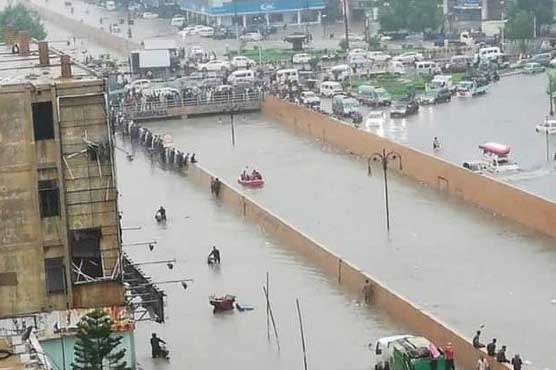By Amin Ahmed
ISLAMABAD: Over eight million people still potentially exposed to floodwaters or living close to flooded areas. According to United Nations Satellite Centre’s imagery indicates an estimated eight million people still exposed to floodwaters or living close to flooded areas. The report released on Tuesday said floodwaters still present in 11 districts of Sindh and two districts of Balochistan.
The UN Office for the Coordination of Humanitarian Assistance’s report said floodwaters continued to recede in many flood-affected areas of the country.
The standing floodwaters continue to be present in Dadu, Kambar-Shahdadkot, Khairpur, Mirpurkhas, Jamshoro, Sanghar, Umerkot, Badin, Shaheed Benazirabad and Naushahro Feroze districts in Sindh, and Sohbatpur and Jafferabad districts in Balochistan.
According to report the floods have had a significant impact on health, particularly for children. Poor sanitation and contaminated water resources are adversely affecting the health and wellbeing of children as cases of diarrhea and other waterborne diseases are still prevalent.
Moreover, overcrowded and makeshift shelters, damaged health infrastructure and inadequate water and sanitation have compounded the risk of measles and rubella, along with waterborne skin and respiratory illnesses.
The floods have exacerbated underlying vulnerabilities that existed in flood-affected areas prior to recent flooding. According to WHO, Pakistan is among the top 10 countries in the world with a large pool of unvaccinated or under-vaccinated children and is home to more than 600,000 children who have not received a single vaccine dose.
Major immunisation service delivery interruptions have been reported in Balochistan and Sindh. A recent need and gaps analysis by partners in the food security sector indicates a persistent and increasing need for emergency food assistance moving into the first quarter of 2023.
The report says a failure to address this need would worsen the already frail food security situation and drive more people into crisis and emergency levels. The food security situation of an estimated additional 1.1 million people is deteriorating and is forecast to fall into the emergency food security phase between January and March 2023.-Courtesy DAWN
Over 8m exposed to floodwaters:13 districts of Sindh, Balochistan still under water: UN Report
17
previous post




